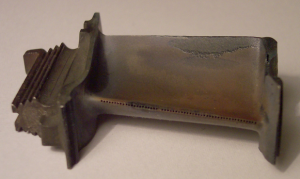
Material creep is defined as the continuing deformation of a metal under a steady load. Other factors affect the creep of materials including temperature and alloy under stress. Lead is such a soft metal that creep affects the metal more than other harder metals such as steel, aluminum or brass. Lead is soft enough that it will creep under its own weight in time. Any additional load on the material or an increase in temperature will increase the creep rate.
It is important to consider the impact of lead creep in your design. If the environment that the lead will be used in will have a temperature more than the room temperature, the effects of creep increase greatly. Lead is also not very good at any alloy for providing structural stability. Consideration should be made to support the lead or laminate the lead to a stronger metal for support.
Lead by nature is very soft and creeps in time. Some basic data is listed below. You can also download the data from our Technical Data Library on the homepage of our website.
Pure Lead Creep Rates
Room Temperature, pure lead
| Stress in lbs per Sq Inch | Creep % per Hour |
| 200 | 0.5 x 10 ^-4 |
| 300 | 3.5 x 10 ^-4 |
| 400 | 11 x 10 ^-4 |
Lead Elevated to 150 Degrees F
| Stress in lbs per Sq Inch | Creep % per Hour |
| 200 | 6 x 10 ^-4 |
| 300 | 50 x 10 ^-4 |
| 400 | 230 x 10 ^-4 |
Other Mechanical Properties of Cast Lead and Lead Alloys
| Alloy | Brinnell | Density | Tensile, lbs per Sq In | Elongation |
| Pure | 4.0 | 11.36 | 2,500 | 45% |
| 1% Sb | 7.0 | 11.26 | 3,400 | 16% |
| 2% Sb | 8.0 | 11.18 | 4,200 | 16% |
| 3% Sb | 9.1 | 11.10 | 4,700 | 15% |
| 4% Sb | 10.1 | 11.03 | 5,660 | 22% |
| 5% Sb | 11.0 | 10.95 | 6,360 | 29% |
| 6% Sb | 11.8 | 10.88 | 6,840 | 24% |

